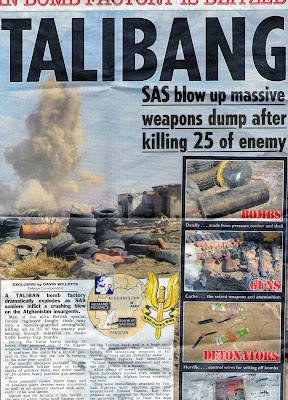Known more for her metal work,Marianne Brandt (1893–1983), privately worked on photomontage and avant-garde collage compositions at the Bauhaus. Her Tempo, Tempo Progress, Culture, 1927, creates “An image of a confident engineer, presiding over an enormous machine that radiates rings of dynamic text, it vibrates with the optimistic spirit of the Bauhaus...They were not known until the 1970s, after World War II, when a renewed interest in Bauhaus practice led art historian Eckhard Neumann to encourage Brandt, who had returned to her hometown in East Germany after the war, to send some of the early experiments west. All but two of the works here were, as far as we know, not meant for public display. And of those, Tempo-Tempo was a design for a magazine cover that was never used”
22. Surrealism and Selling
Herbert Matter (1907-1984) studied under Fernand Léger at the Académie Moderne in Paris in the late 1920s. Influenced by the photographs and collages of Man Ray and EL Lissitzky, Matter experimented with expressive design using his Rolleicamera.
He was hired as photographer and designer for the Deberny and Peignot typefoundry, assisting poster designer Cassandre.(#19)
Upon his return to Switzerland Matter designed a series of travel posters using his signature photomontage technique. The poster above, a combination of three different photographs, was printed by gravure, a high quality process that results in dense ink coverage and rich color.
At age 32 Matter moved to the US and soon produced work for the likes of MOMA, Condé Nast, the Guggenheim Museum, Knoll Furniture and the New Haven Railroad. A film The Visual Language of Herbert Matter is making the rounds to design schools and conferences ...check the viewing schedule here.
http://www.designhistory.org/The_History_of_Posters.html
aP1547 - Russian Poster, Artist: Alexander Rodchenko, 1920s (30x40cm Art Print)
Art print on thick paper, image from our library of original vintage printed ephemera. The overall print size is 30x40cm (approximately 12x16 inches). There is a plain border of about 1cm around the image to allow for framing if required.This is the poster I designed for my organisation's anual public conference. It's usually a big event, with international speakers and a range of impressive local speakers.
Stylistically, I still took something from constructivism, but it is rather toned down compared to what I'd like to be able to get away with. Come the revolution such sensibilities will be cast into the dustbin of history!
And, of course, anyone who is interested in discussing radical ideas for changing the world is warmly invited!
Stylistically, I still took something from constructivism, but it is rather toned down compared to what I'd like to be able to get away with. Come the revolution such sensibilities will be cast into the dustbin of history!
And, of course, anyone who is interested in discussing radical ideas for changing the world is warmly invited!















